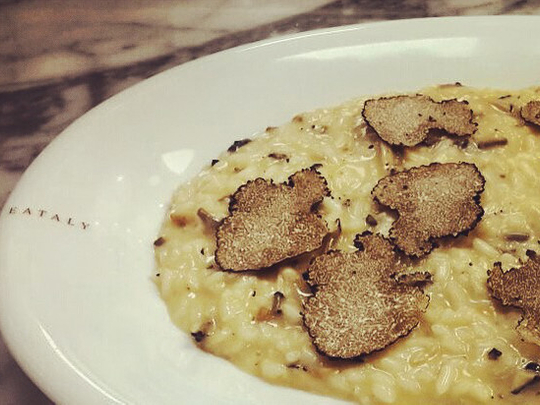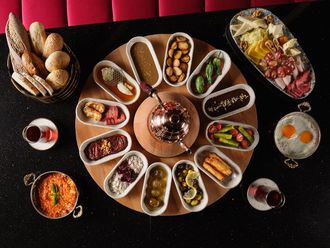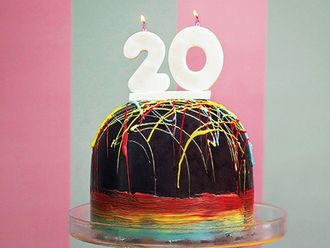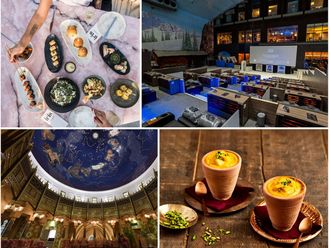
2014 is a great year for truffle lovers.
The funky fungi — beloved by gourmets around the world — had a bumper crop, thanks to rotten weather in northern Italy, where the most prized variety, the white, grows. That’s brought the price down to half of what it was two years ago.
“It was a very bad summer if you were a tourist, but great for truffle lovers,” food importer Massimo Vidoni, aka Dubai’s Truffle Man, tells me. The wet summer meant the mushrooms, which grow under the ground around certain trees and are hunted with the help of dogs, flourished, increasing by 30 per cent. We’re at peak truffle season right now, with the pricey mushroom being shaved over risottos and sashimi in all manner of restaurants in the UAE, from Italian Amici to Japanese Zuma. It will be available until stocks run out, most likely until the end of the month.
Vidoni has been supplying truffles to UAE restaurants for over three years, and says this season the amount he’s brought in — 20kg — is almost double last year’s haul. That’s down to an increase in demand as well as more truffles available.
If 20kg doesn’t sound like much, bear in mind that restaurants sell fresh shavings of truffle by the gram — at Marco Pierre White Grill at Dubai’s Conrad Hotel, for example, it’s Dh65 per gram. Yes, that’s Dh65,000 a kilo.
For comparative purposes, the price of gold at the time of writing was Dh137 per gram, and a couple of years ago, white truffles literally were worth their weight in gold.
The Italian market price is now about €220 (Dh1006) per 100g, compared with €350 last year and €500 in 2012, according to data from the National Centre for the Study of Truffles cited in a Bloomberg report.
There are good substitutes for fresh truffle, such as truffle butters, as well as oils, but buyer beware: many of the oils on the market are synthetic. That’s not necessarily a bad thing, says Rosario Scarpato, the director of the Italian Cuisine World Summit, taking place in Dubai until November 20.
He’s Italian, so he explains this in terms of sports cars.
“I don’t want to appear controversial. Many people don’t know what white truffles are. So if the first time in their life, they try white truffle oil, it’s better than nothing. We are talking about luxury items. It’s like buying a Maserati or a Lamborghini if you can’t drive the car. What’s the point?”
White truffles are never cooked — the pungent yet fragile aroma and flavour would be destroyed — and instead are sliced thinly using a special tool, in front of the customer. Truffle is best paired with carbs and fats, which let the flavour to shine through, so you’ll find it in risotto and pastas, and on top of creamy eggs. Asian restaurants, however, are making great use of truffle paired with delicate seafood (Zuma’s seabass sashimi with yuzu-truffle dressing is a delicious case in point). Black truffles, from the Perigord region of France, are popular among French chefs.
“In France, truffles have been used for centuries and are not only perceived as a delicacy but also a tradition,” Olivier Chaleil, executive chef at the Sofitel The Palm Dubai says. “Being French myself, I have been exposed to the truffle royalty for years and know that guests either love them, don’t fancy them, or still have a lot to explore.”
Vidoni, like most lovers of truffles, is extremely passionate about the subject, yet he’s also at a loss to exactly describe the flavour.
He laughs as he imagines trying to describe the flavour to someone who’s never had it — because it doesn’t sound especially pleasant. “Like a mix of garlic, feet ... people tell me gas, artichoke. It’s a complex mix. To everybody, like art, it resembles something different. It’s a specific flavour. It’s exciting.”











